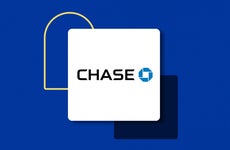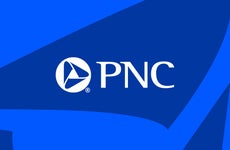Banking
From checking account details to bank reviews, debit card insights and more — you’ll find smart banking basics here.
Banking Basics
Editor's Picks
Latest Articles
-

Chase checking accounts
Decide whether these products offered by America’s biggest bank meet your needs.
4 min read Apr 15, 2024 -

Truist savings account rates
Need a savings account? Here’s what the newly created Truist bank pays.
2 min read Apr 15, 2024 -

American Express CD rates
Here’s everything you need to know about the bank’s rates.
1 min read Apr 15, 2024 -

PNC Bank CD rates
Everything you need to know about the bank’s yields on CDs.
2 min read Apr 12, 2024 -

Bank of America checking accounts
Everything you need to know about BofA’s checking accounts.
4 min read Apr 12, 2024 -

What is a good interest rate on a savings account?
The top high-yield savings accounts are currently earning APYs of 5 percent and greater.
2 min read Apr 12, 2024 -

Chase CD rates
The big bank offers a range of CD terms, but you can find much higher APYs elsewhere.
1 min read Apr 12, 2024 -

Ally Bank CD rates
Everything you need to know about the online bank’s CD rates.
2 min read Apr 12, 2024 -

National average money market account rates for April 2024
Get the latest rates on top-yielding money market accounts.
2 min read Apr 11, 2024 -

What is the average interest rate for savings accounts?
Comparing savings rates can ensure you get the best return on your savings.
3 min read Apr 11, 2024 -

How financial literacy for young adults has evolved
Balancing a checkbook may be passé, but managing your money well still matters.
8 min read Apr 11, 2024 -

Wells Fargo CD rates
Wells Fargo offers three standard terms of CDs online. Here’s what you need to know about minimum balances, fees and more.
1 min read Apr 11, 2024 -

Truist Bank near me: Find branches and ATMs close by
Looking for a nearby Truist Bank location or ATM? Here’s how to find the closest ones.
2 min read Apr 11, 2024 -

Should you replace your bank account with PayPal?
Here’s everything you need to know about using PayPal as a bank account.
4 min read Apr 11, 2024 -

Current CD rates for April 2024
Check out the latest CD rates from Bankrate’s weekly survey of banks and thrifts.
2 min read Apr 11, 2024 -

The 9 smartest things to do with your annual bonus
Extend the benefits of your bonus into the new year and beyond.
7 min read Apr 10, 2024 -

What is a high-yield savings account? Definition and what to consider
Here’s everything you need to know about high-yield savings accounts.
6 min read Apr 10, 2024 -

What is a second-chance checking account? Here’s everything you need to know
A second-chance account can help to restore your standing in the eyes of your bank.
4 min read Apr 10, 2024 -

5 reasons to add beneficiaries to your accounts right now
Naming a beneficiary can often avoid untold problems and complications later.
4 min read Apr 10, 2024 -

Top high-yield savings accounts are now beating inflation. Here’s why that’s important
Savings yields topping inflation could let you hold onto your purchasing power.
5 min read Apr 10, 2024
Related Topics
Helpful Links
- Savings calculator
- CD ladder calculator
- Compound interest calculator
- Investment calculator
- Best savings accounts
- Best checking accounts
- Best bank account bonuses
- How to save money
- Build an emergency fund
- Savings tips for different goals
- How to write a check
- How to deposit a check
- How do money orders work?
- How to fill out a money order
- Ways to insure excess deposits
- Cashier's check vs. money order
- How to close a bank account




